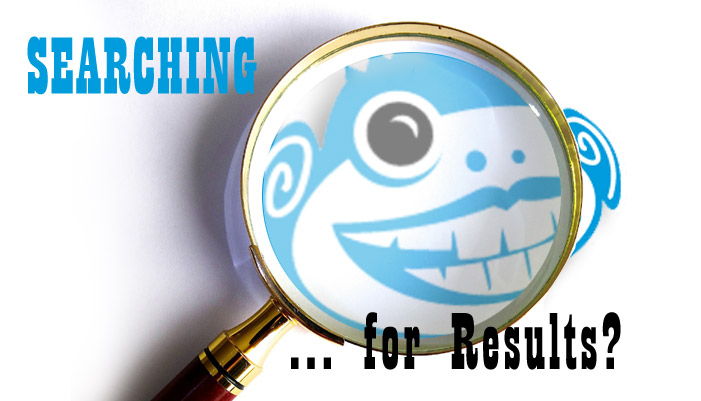
After a year of planning, strategizing, beta testing, kick-starting, and staying up round the clock to bounce ideas around with your product development team and creative folks, you’ve finally got a shiny new product that’s ready for public consumption. From your perspective, it’s your best offering yet—the best snowboard, the best backpack for mobile entrepreneurs, the most environmentally friendly this or that—but how can you ensure your message gets out to your target buyers? How can you be sure you’re not the proverbial wallflower at the high school dance, all dressed up but no suitors?
One element that’s critical to the success of marketing plans in the 21st century is how your various online efforts integrate with Search Marketing. This includes things like your blog, online articles, eBooks, landing pages, website copy, visual content (graphics and video), press releases, email and advertising copy, and your social media profiles.
What is Search Marketing?
Barrel O’ Monkeyz uses “Search Marketing” as an umbrella term covering both “Search Engine Marketing” and “Search Engine Optimization.” To best understand, let’s first take one big monkey step back and define what search marketing is, and then explore the pros and cons of each approach.
Search Engine Marketing
“Search Engine Marketing” (SEM) or “Paid Search” is simply paying to get listed in search engine results to boost your web traffic. And, you guessed it, the more you pay, the higher/more prominently your listing will appear in search results.
- Typical tools of the trade include paid search ads, advertising on search results pages, and pay-per-click (PPC) or cost-per-click (CPC) strategies.
- Many businesses rely on platforms such as Google AdWords, Bing Ads, Yahoo, and/or major Social Media platforms to deliver their search ads.
Search Engine Optimization
“Search Engine Optimization” (SEO) is getting web traffic from the free or natural search engine results delivered by the Googles, Bings, and Yahoos of the world. Numerous factors can affect your SEO:
- At the top of the list is content—quality content (and lots of it) that your target buyers want and value. Content includes things like your blog, online articles, eBooks, landing pages, website copy, visual content (graphics and video), press releases, email and advertising copy, etc.
- You’ll need to know the keywords and phrases your target buyers will typically use to find your product or service online—and you’ll want to use these terms in your website, blog, and social media content and “behind the scenes” in the website’s actual programming codes and tags.
- You’ll also want to ensure that your website is SEO friendly from a technical standpoint. Do your codes and tags conform to current standards? Do you have a lot of broken links on your site? How often is the content refreshed? Are there other technical issues that might be impacting the frequency of search engine visits? Is your website mobile friendly?
So for example, if you were marketing a new, weather-resistant bag for business travelers and their computer gear, you could deploy SEM to immediately boost your presence on search results and social media platforms, while you would rely on SEO to deliver great content your web visitors can’t get anywhere else so they’ll keep coming back for more and share it with their friends.
Organic vs. Inorganic
Paid search results (SEM) are referred to as “Inorganic,” compared to “Organic” for non-paid (SEO) results.
Which is better? Each has its merits:
- A rule of thumb is that organic results, once they’ve gained traction, stick around longer, while paid results disappear the moment you stop buying them, which means you need to keep paying for them again and again (of course, if the paid results are what drive your business, then it’s money well spent).
- Consumers of all types tend to “trust” organic results more than they do paid results, which means organic results get more clicks.
- The main benefit of paid search is that it gets you/your product on the radar of online consumers fast. You don’t have to wait for your organic efforts to gain traction (which can often take weeks). With paid search, in as little as a day you can be at the top of the search page.
For most, the best search approach is usually to do both SEM and SEO.
Fun Tricks of the (Search) Trade
The Big Picture
Understanding how to dovetail your online efforts with an effective search marketing strategy to get the most targeted exposure for your brand is often daunting for businesses of all shapes and sizes, and for their leaders. Chances are, your time is better spent in the lab or the board-room perfecting your product, or out shaking hands and kissing babies, rather than staring at computer code and website usage reports trying to chase ever elusive keywords and phrases to connect with your target audience. That’s why digital marketing and branding companies like Barrel O’ Monkeyz exist, so you can do what you do best—know your customers and grow your business.
10 Steps to Better SEO
Getting the most out of search marketing for your business can be a challenge. The rules are constantly changing. To help you get started, Barrel O’ Monkeyz has developed a “10 Steps to Better SEO” White Paper (PDF format) that’s full of ideas and resources you can use right away to begin developing a successful Search Marketing strategy. Click here to download.
Paul June is King Monkey of BARREL O’ MONKEYZ, a full-service digital media and marketing group specializing in more creativity, ideas, and fun for action sports marketing, sportswear marketing, sports product marketing, active lifestyle consumer products, health product marketing, and brands in San Diego and Southern California.

Trackbacks/Pingbacks